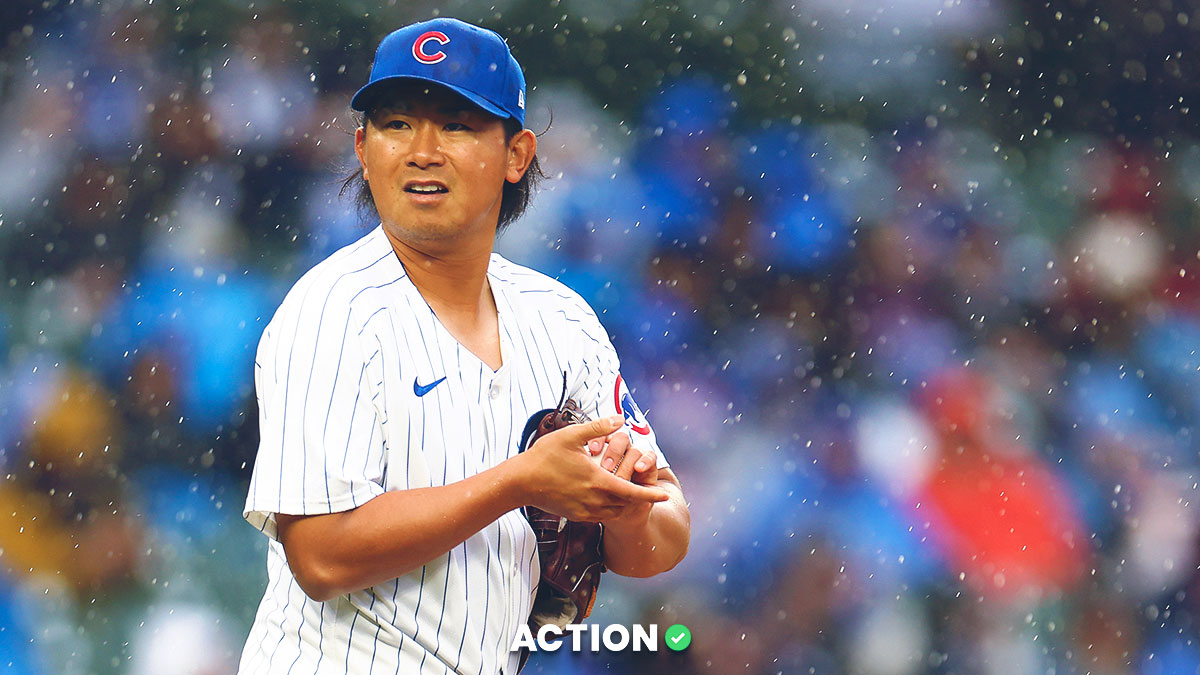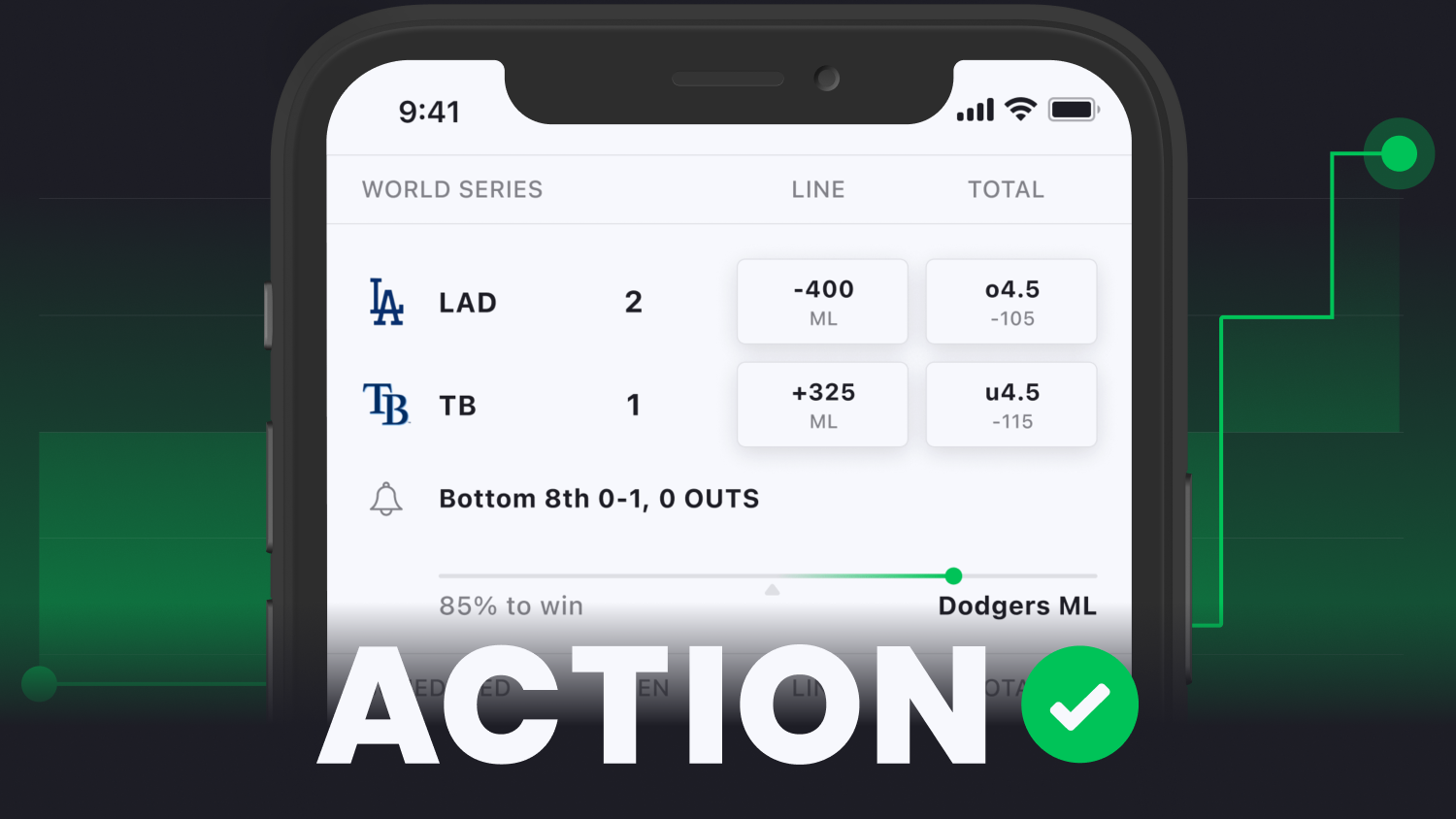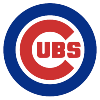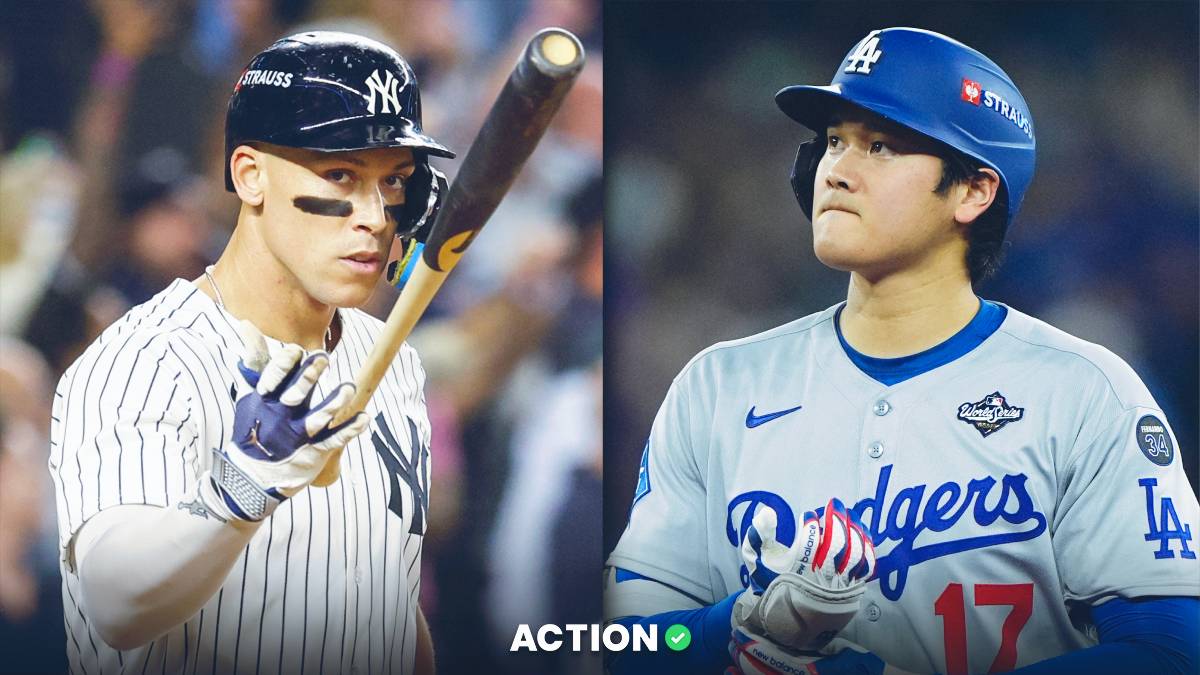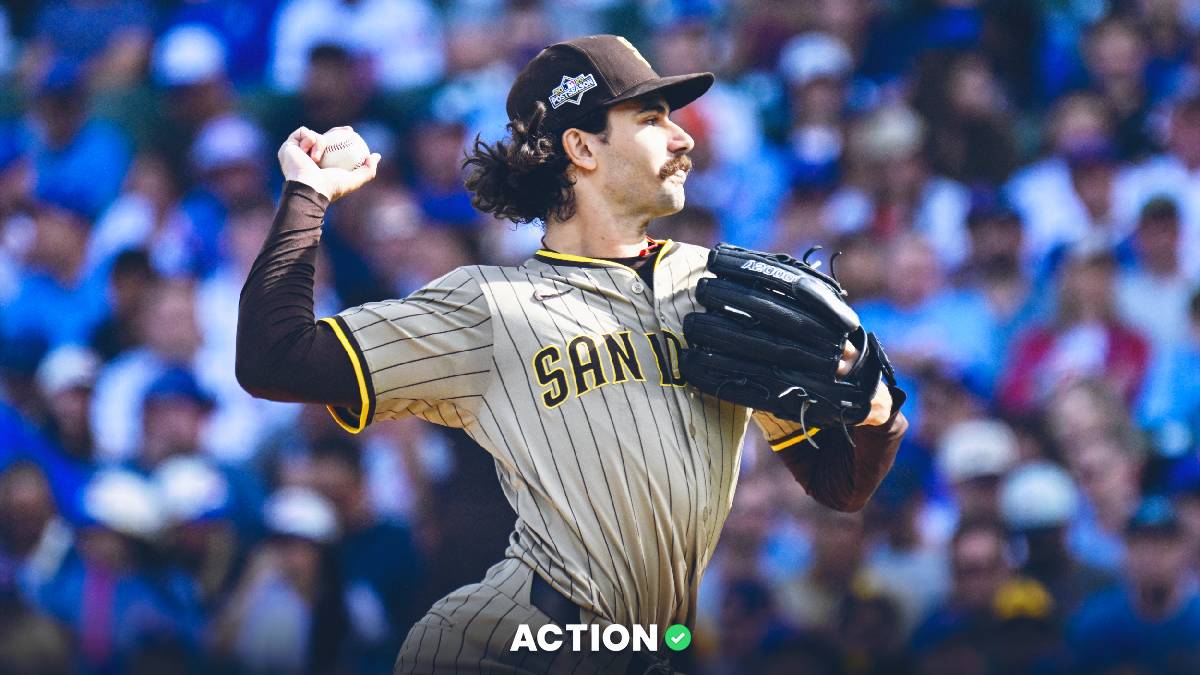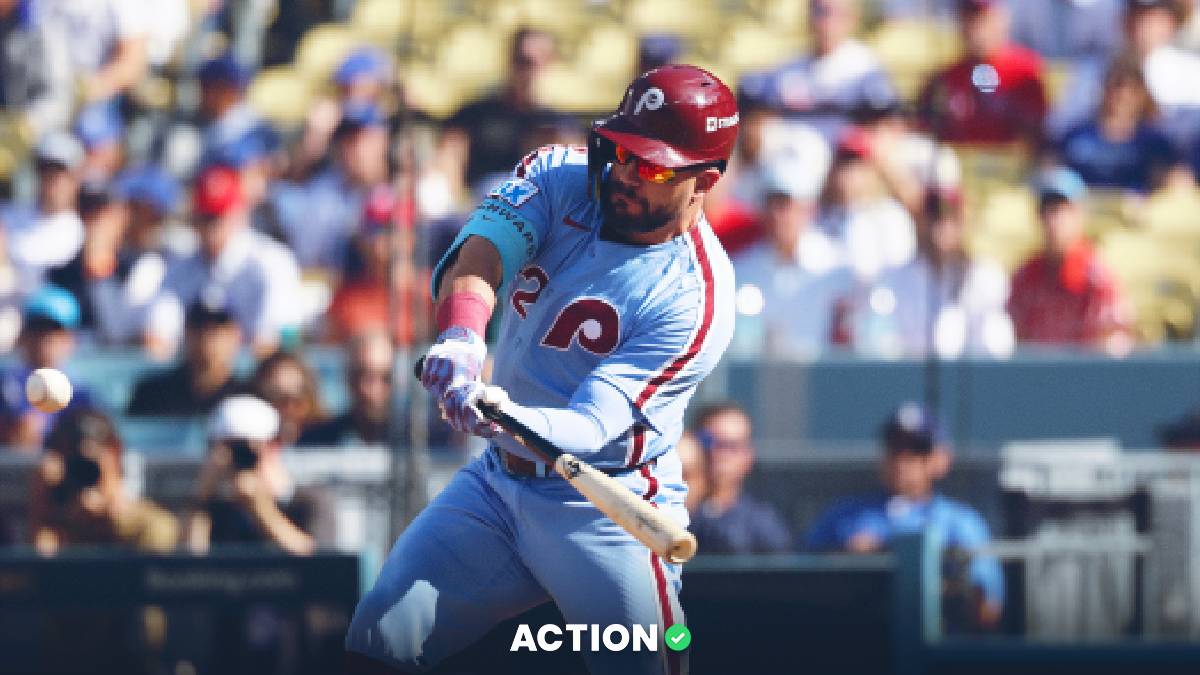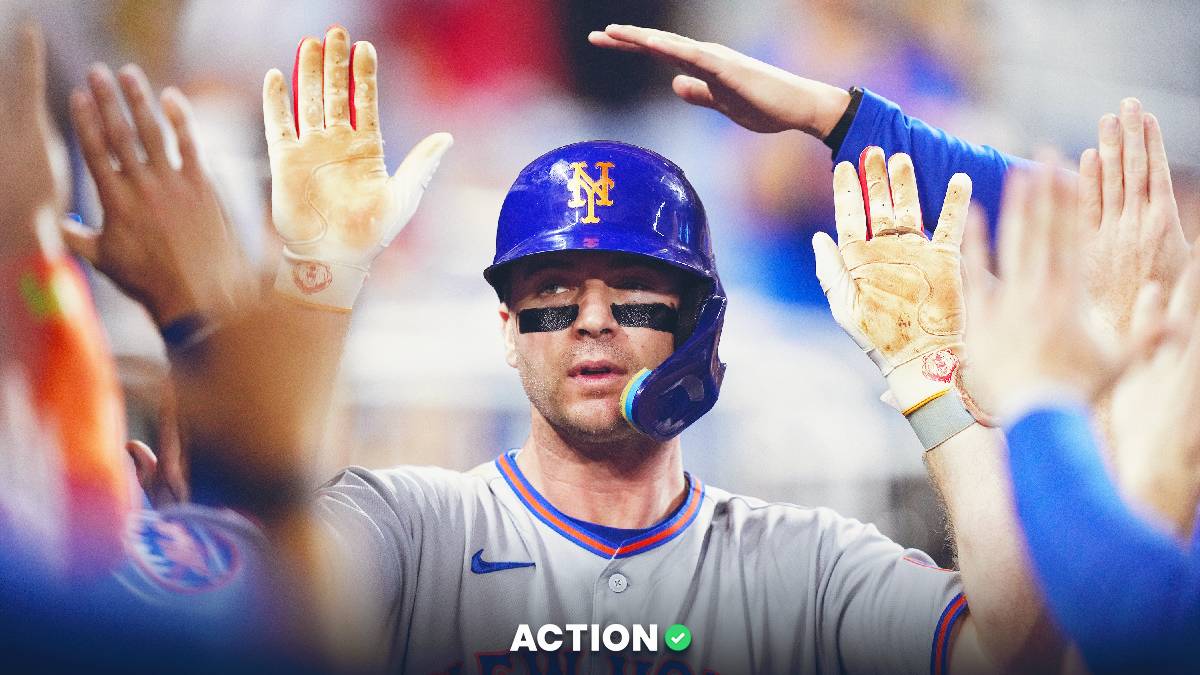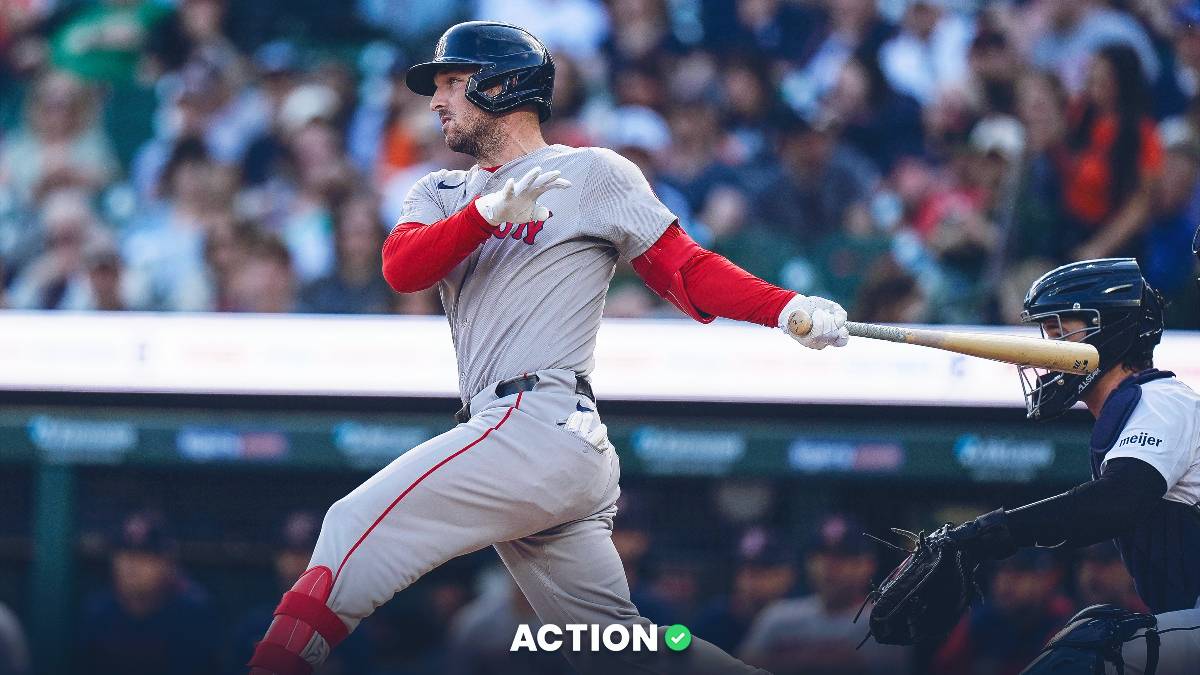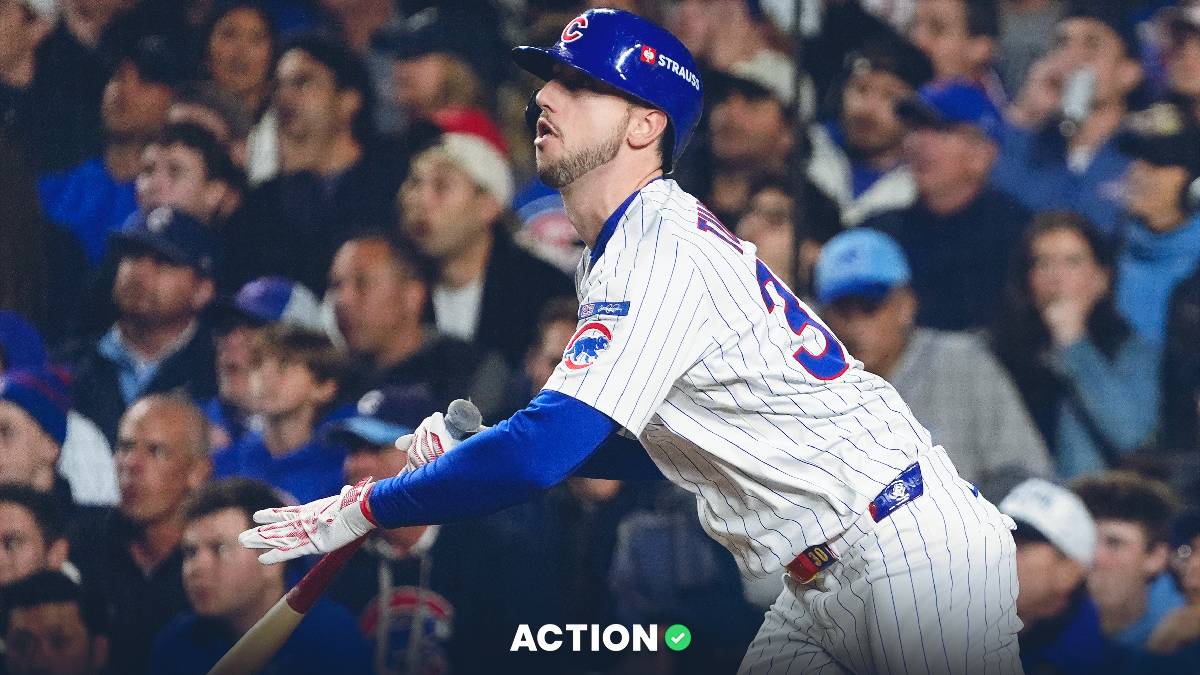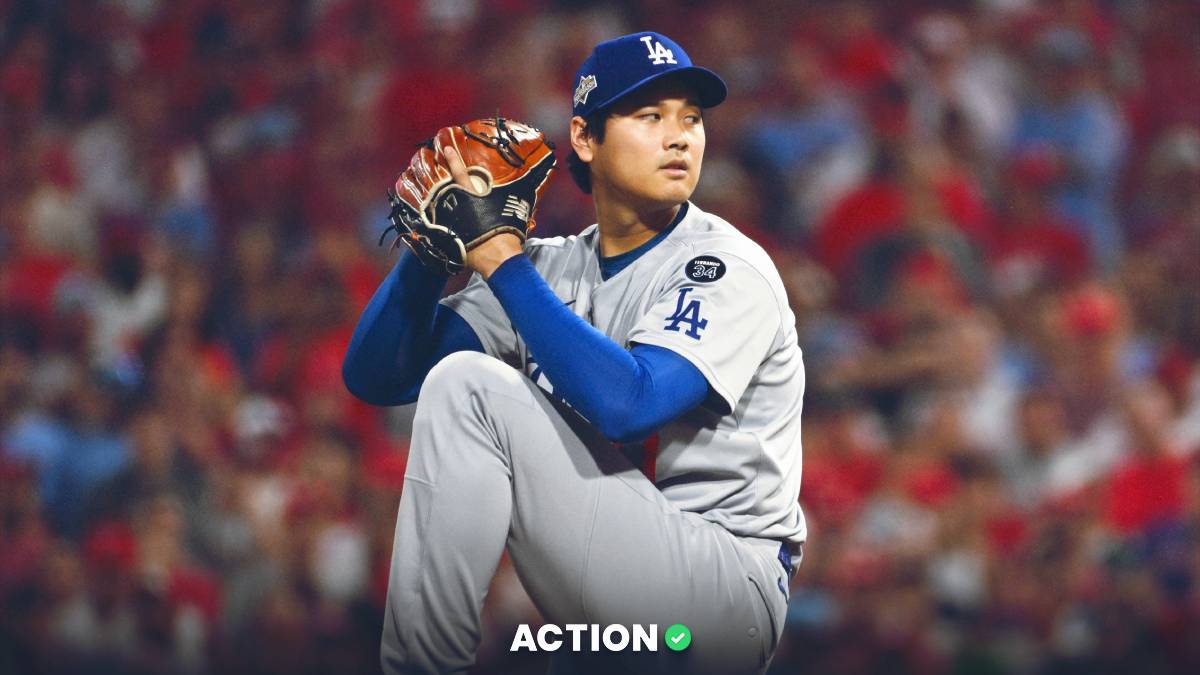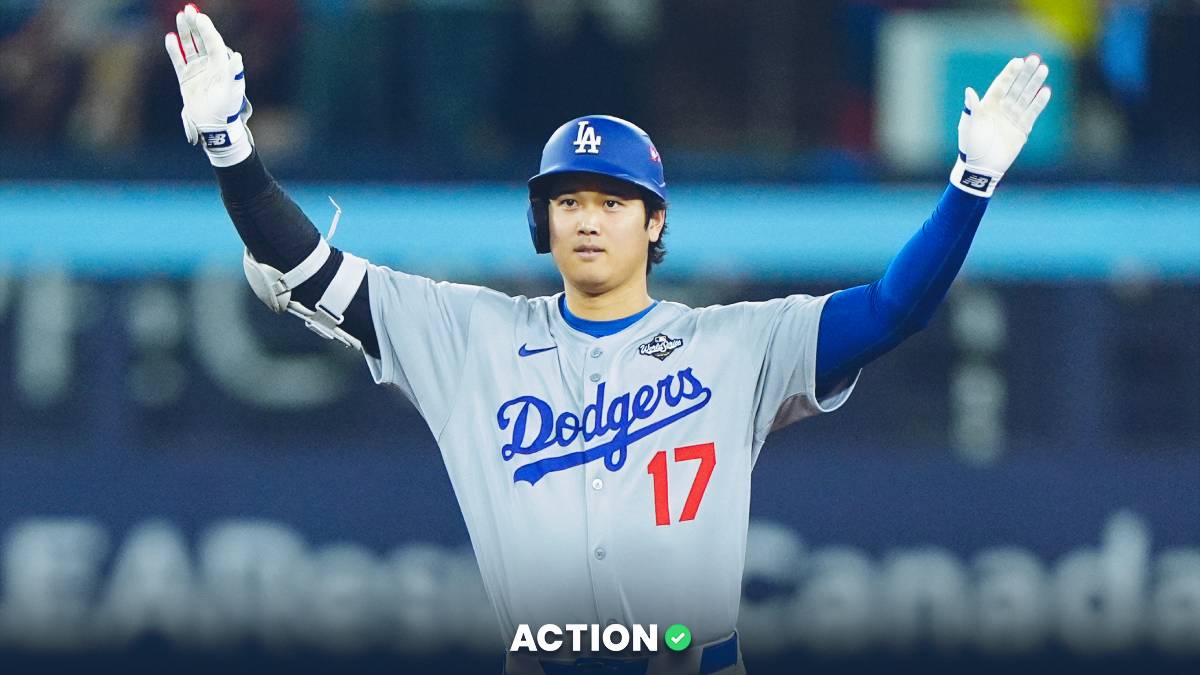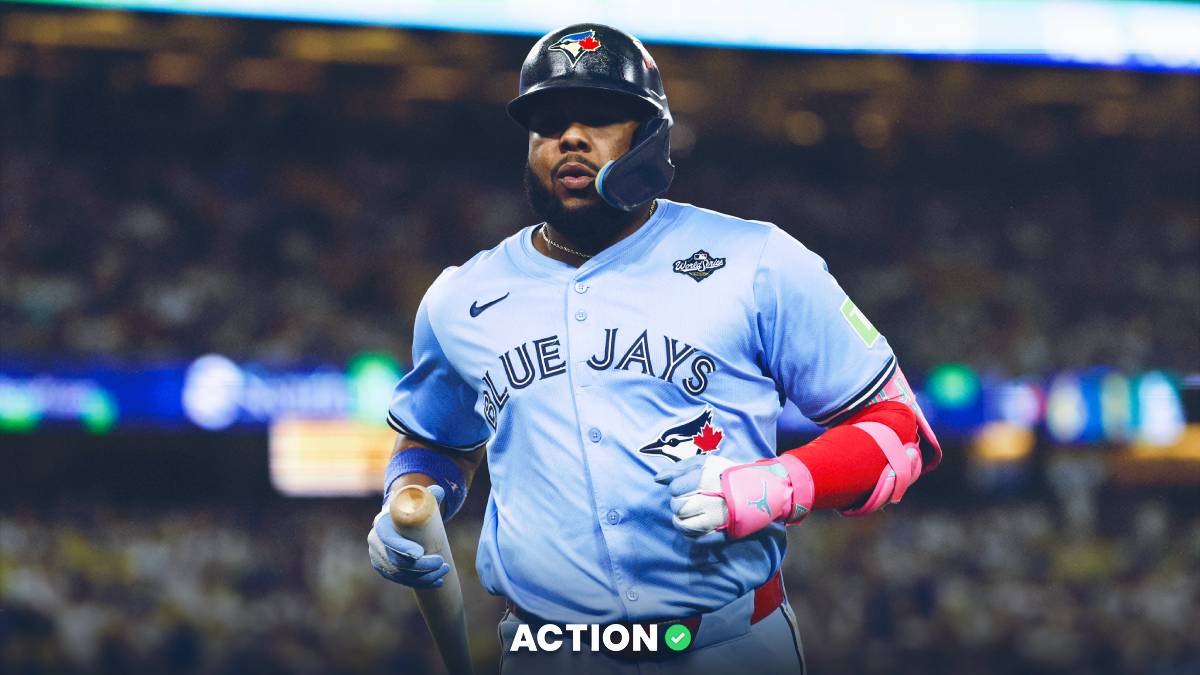Every two weeks during the MLB season, Action Network’s Tanner McGrath will compile a notebook of observations, analytical findings and actional information to help bettors find an edge in the daily grind of betting a 162-game season.
At the time of writing (Monday, May 20), Patrick Bailey (concussion), Nick Ahmed (left wrist sprain), Michael Conforto (right hamstring strain) and Jung Hoo Lee (left shoulder dislocation) are on the Giants’ IL. Jorge Soler (right shoulder strain) was just activated after a two-week hiatus.
The Giants have an OK lineup, posting a 103 wRC+ against both sides. But they’ve generated 6.4 fWAR this season — those four injured hitters have accounted for 2.2 WAR.
Bailey is in the midst of a breakout season, with a .792 OPS, .117 ISO and 127 wRC+. Conforto is slashing .280/.310/.331 and has 138 wRC+. Soler has smacked five homers and six doubles in 150 PAs.
Luckily, Bailey, Ahmed and Conforto should return relatively soon — all three are on the 10-day IL with supposedly limited injuries.
Lee, however, underwent season-ending shoulder surgery after crashing into an outfield wall trying to track down a fly ball. That’s a tough break for an exciting rookie who flashed good contact skills and solid center-field defense.
The point of this is to implore you to tread lightly if you're betting the Giants over the next few weeks. With all the injuries, the Giants are trotting out a Triple-A lineup as currently constructed.
Surprisingly, their bench bats are crushing in the starters’ stead. The Giants boast the league’s second-best wRC+ over the last week (146) behind excellent plate discipline (10% walk rate, 16% strikeout rate). Youngsters like Luis Matos (177 OPS+) and Heliot Ramos (128 OPS+) are overperforming in much-needed at-bats.
But I think the lineup as a whole is overperforming. The Giants were fortunate to drop 28 runs in a three-game home set with the Rockies. While they're seeing the ball well, their batted-ball profile leaves much to be desired, ranking among the bottom-five teams in pull rate (41%), hard-hit rate (38%) and barrel rate (6%) over the last two weeks.
Oracle Park is a tough place to hit, with MLB’s fourth-lowest park factor (97) and lowest home run factor (80). Giants home unders are 15-9 this season despite five of the last seven Oracle games going over.
The Giants can pitch. Logan Webb, Kyle Harrison and Jordan Hicks provide a great top of the rotation. The bullpen is underperforming (4.62 ERA, 3.63 xFIP), and I find it hard to doubt a unit led by Camilo Doval, Ryan Walker and the Rogers bros.
With injuries piling up, bench bats overperforming and the bullpen underperforming, I’d keep a close eye on Giants unders over the next few weeks. I could imagine some regression in the lineup, especially in the Bay.
But, again, closely monitor the injury report before betting on Giants games. Handicaps can change on a dime if one player returns or stays on the IL for a longer stretch.
The Astros dropped to 12-24 on May 8 after a 9-4 loss to the Yankees. They were 8 1/2 games back in the AL West race, and their playoff odds dropped to 31% after beginning the year at 86%.
The lineup has mashed all year, but the 'Stros' pitching staff devolved into the league’s worst.
Part of that development was due to injuries. Houston spent long stretches of the early season without Justin Verlander, Luis Garcia, Lance McCullers, Jose Urquidy, Framber Valdez and Kendall Graveman. In their stead, young starters Hunter Brown (7.71 ERA, 4.07 xFIP) and Spencer Arrighetti (7.16 ERA, 4.14 xFIP) have run poorly, while relievers Josh Hader (4.50 ERA, 2.45 xFIP) and Ryan Pressley (5.51 ERA, 2.34 xFIP) have also underperformed.
Even with improved recent results, Houston still ranks last among MLB teams in pitching fWAR (1.4). The Astros were also unlucky with late-game variance, losing nine of their first 10 one-run games and four of their first five extra-inning games.
But I think the positive regression train has finally pulled into Houston Station.
The Astros have won nine of their last 11 games, winning series against Detroit and Milwaukee while obliterating Oakland in a four-game sweep. During this stretch, Houston went 3-0 in one-run games and finally won an extra-innings affair.
The bullpen has improved vastly, posting a 2.68 ERA and a 30% strikeout rate over the last two weeks with zero losses.
The rotation could still be better – specifically Verlander (5.94 ERA, 5.72 xFIP). But Urquidy is expected to make another rehab start, McCullers started throwing light bullpen sessions a few weeks ago and J.P. France is just day-to-day. With some injury luck, the Astros could quickly become a more average run-prevention unit.
That’d be huge given Houston's lineup is amongst the best in baseball. The Astros rank fourth in wRC+ (117), fifth in average exit velocity (90 mph) and sixth in hard-hit rate (41%).
Kyle Tucker is evolving into a flat-out superstar behind a more disciplined approach (18% walk rate, 17% strikeout rate) and some extra pop (.335 ISO).

Jeremy Peña is finally hitting his weight (139 wRC+). Jose Altuve is overwhelmingly consistent (145 wRC+). Yordan Alvarez has eight homers and seven doubles in 200 PAs.
Ultimately, the Astros have increased their playoff odds by nearly 25 points during this winning stretch of baseball.
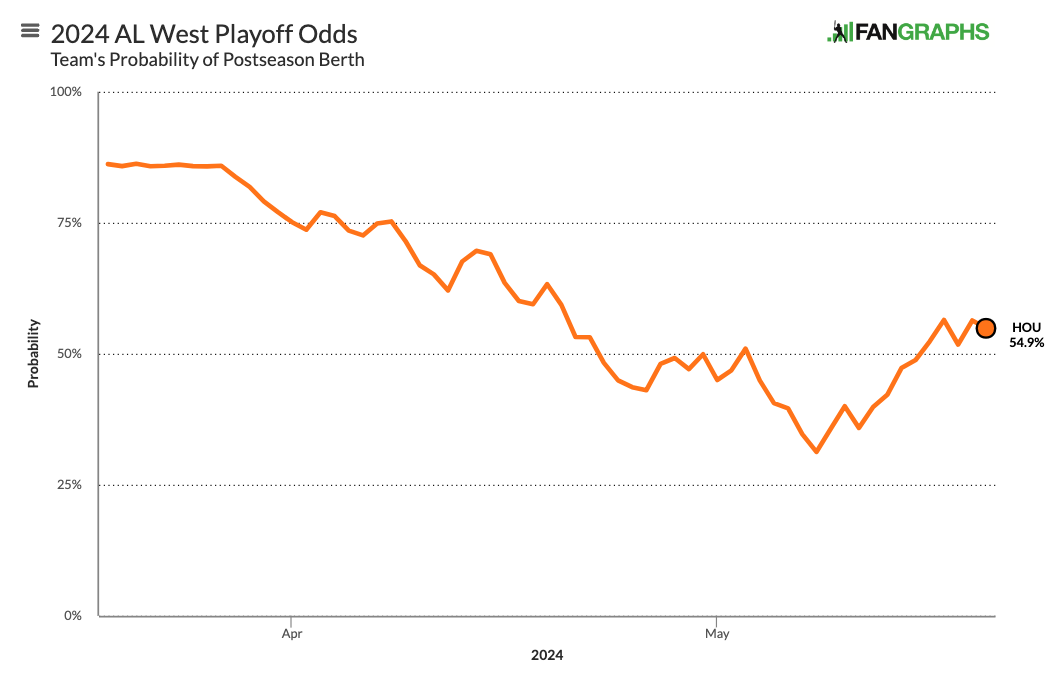
The Astros have propelled themselves back into the AL West race. Entering Monday, they’re only four games back of the Mariners, who have the worst record (25-22) and run differential (+1) of any division leader. They're also only 3 1/2 games back of a Wild Card spot.
Houston has the easiest remaining strength of schedule (.480) of any AL West squad, with nine more games against the sliding A’s, six against the hapless White Sox and 13 against the Mike Trout-less Halos.
PECOTA projects the Astros as the favorites to win the division (48%), although FanGraphs still makes Seattle a slight favorite (44% to 40%). Still, you can get Houston to win the AL West at +225 on Caesars, which is only 31% implied.
The team should get healthier, and the pitching staff should see further positive regression, even with Ronel Blanco’s suspension. I think the Astros are the team to buy in the AL West, and there should be plenty of opportunities to target them on a game-to-game basis as they surge back into the playoff picture.
I don’t understand the Blue Jays.
They’re 5-9 in May behind 3.8 runs per game. They have a 94 wRC+ on the year and an 88 wRC+ over the past two weeks. They rank among the bottom three MLB offenses in average exit velocity (88 mph) and hard-hit rate (36%). They’re pulling under 40% of their balls with a meager 24% fly-ball rate.
While they’re relatively disciplined at the plate, they boast a batted-ball profile reminiscent of the A’s or Nationals rather than a team that has George Springer, Bo Bichettte and Vladimir Guerrero Jr. at the top of the order.
Many of Toronto’s best hitters are underperforming. Still, Bichette and Springer have posted an expected wOBA of around .300 across 350 PAs, which isn’t precisely star-level stuff.
| Blue Jay | PA | wOBA | expected wOBA |
|---|---|---|---|
| Vladimir Guerrero Jr. | 196 | .344 | .380 |
| George Springer | 178 | .264 | .311 |
| Bo Bichette | 176 | .259 | .294 |
| Justin Turner | 150 | .304 | .336 |
| Isiah Kiner-Falefa | 132 | .287 | .317 |
| Alejandro Kirk | 95 | .271 | .294 |

The Blue Jays have the league’s best defense, leading MLB in Outs Above Average (OAA) and Defensive Runs Saved (DRS). Yusei Kikuchi, Jose Berrios and Alek Manoah are all producing, but it’s being held back by down years from Chris Bassitt, Kevin Gausman and closer Jordan Romano.
Still, nothing matters because the Blue Jays can’t barrel a ball to save their lives.
It makes me wonder if Guerrero’s MVP-level 2021 was an outlier, given he’s produced a wRC+ between 106 and 133 in every other season. Projection outlets place him with a wRC+ between 140 and 150, but I don’t see how that’s reasonable given a career-high .349 BABIP and career-low .110 ISO.
Additionally, Springer might be past his power prime. His max exit velocity this year is a measly 110 mph, nearly four points lower than any other season. His barrel rate has dropped to a career-low 5%. He’s struggling to hit fastballs and breaking balls.

I’m holding out hope for Bichette, a bat-to-ball guy who has seen increases in his contact numbers (career-high 95% zone-contact rate, career-high 85% contact rate, career-low 9% swinging-strike rate). His power numbers are down, but his .241 BABIP is crazy low, considering his career .341 mark. He should hit close to .300 the rest of the way.
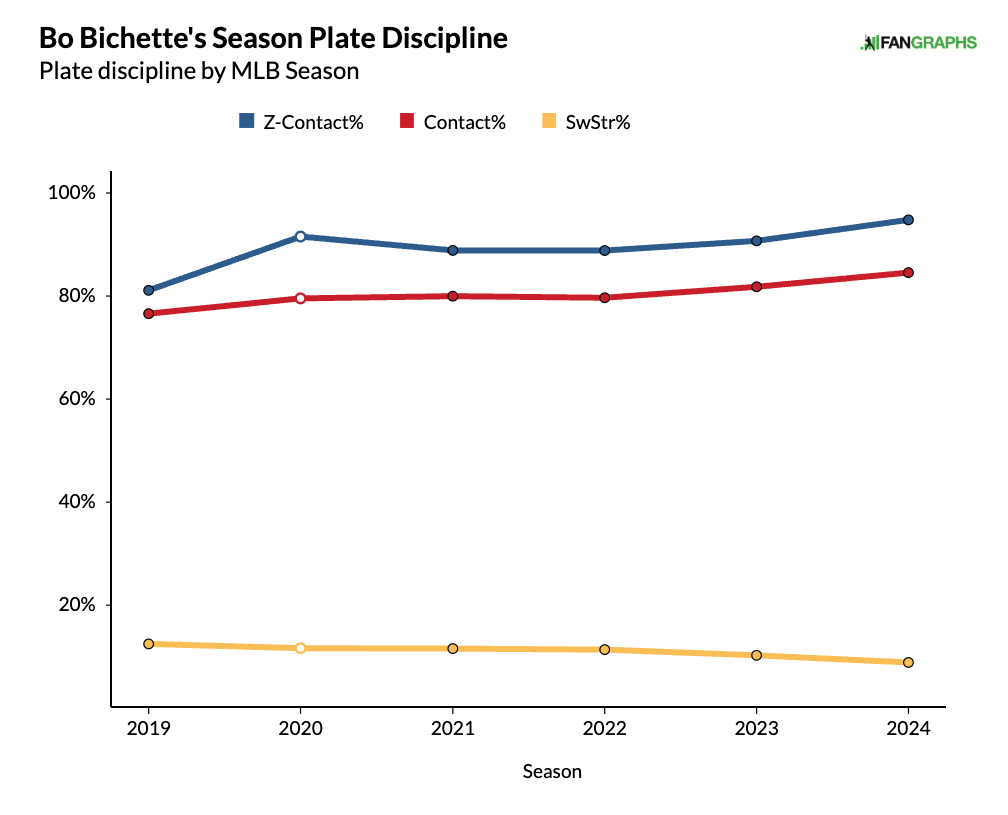
But I remain surprised — and annoyed — at the state of Toronto’s lineup. Even if some more balls bounce its way, how high can the Jays fly with MLB’s second-lowest expected woBACON (.349)?
For some actionable advice, Toronto has been the fourth-most profitable under team this season, likely because markets have been pricing them as an above-average lineup.
I went on the Payoff Pitch podcast last Monday and discussed Chris Sale at length.
I must correct myself, as I accidentally said that his changeup neutralizes lefties when the pitch actually neutralizes righties. Over the past few injury-filled seasons, Sale’s posted pretty considerable platoon splits, mainly because he’s an across-the-plate slider-reliant pitcher, with the slider breaking into the zone on right-handed hitters.
But he’s thrown 36 changeups across his last two starts, a pretty considerable increase from his typical usage rates. The pitch looks legit, with a 31% CSW rate (92nd percentile) and 54% chase rate (95th percentile) behind 17 inches of horizontal break (75th percentile).
Again, it’s allowed him to neutralize right-handed bats …
… which has significantly improved his platoon splits compared to his past few injury-shortened seasons.
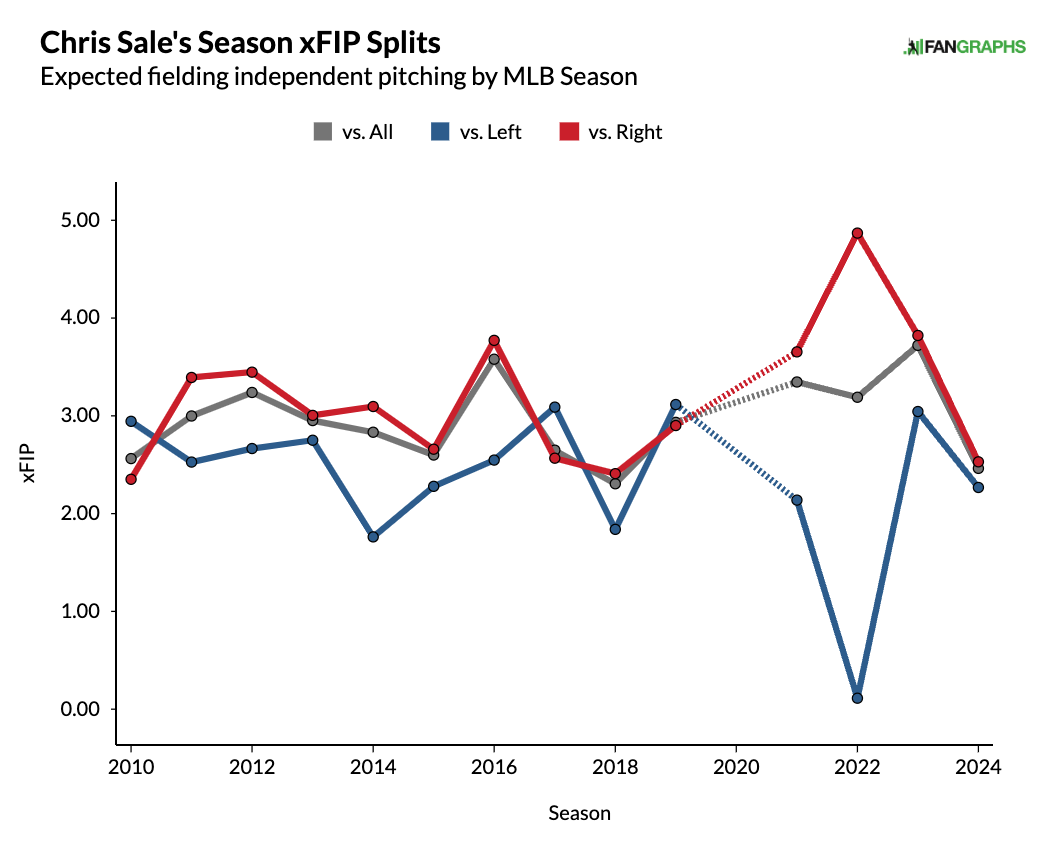
Locating that legit changeup is the key to his longevity as a six-inning starting pitcher — he’s tossed seven innings in four of his last six starts.
Sale’s experienced a significant velocity bump across his arsenal, with his fastball sitting over 95 on average for the first time since 2018. The Stuff+ mark on his patented slider has increased 41 points year over year (from 92 to 133), and he’s generated 42 whiffs on it across his last four starts.
During that four-start stretch, Sale has allowed two earned runs and two walks over 25 innings with 34 strikeouts. He most recently pitched seven shutout frames with nine strikeouts against the Cubs.
Sale is pitching like a Cy Young candidate. His earned-run indicators are around 2.50 (2.54 ERA, 2.57 xERA, 2.47 FIP, 2.46 xFIP), and he’s generated the seventh-most fWAR (1.5) among National League pitchers.
I’m concerned about his longevity due to his lengthy, well-documented injury history. Still, Sale is a buy candidate for the foreseeable future.
He pitches against the Padres on Monday night in Atlanta.
In contrast to Sale, Marcus Stroman is a sell candidate for the foreseeable future.
Stroman’s a sinkerballer, and that pitch is still working, fueling his 55% ground-ball rate. But his fastball velocity has dropped to a career low (91 on average), and he’s become increasingly erratic with his secondary offerings, causing a six-point, year-over-year drop in Location+ (from 100 to 94).
Over the last two seasons, Stroman’s seen a 10-point decrease in his zone rate (from 41% to 31%) and has doubled his walk rate (from 6% to 12%).
Stroman can’t throw stuff in the zone anymore, causing his strikeout minus walk ratio (K-BB%) to drop to a career-low 8%.
Lucky for him, he’s been running well, with a low BABIP (.274) and high strand rate (82%) keeping his ERA in the low 3.00s. His expected indicators are much higher (4.75 xERA, 4.96 FIP, 4.21 xFIP), and I expect negative regression to come in droves.
Stroman pitches on Monday night against the Mariners, where I’ll be fading him. I’ll look to fade him more in his next few starts.
Shota Imanaga cemented himself as the NL ROY favorite after seven shutout innings, with seven strikeouts, against the Pirates.
Even better, Imanaga is a Cy Young candidate. He has the second-most fWAR of any starting pitcher (1.9), the lowest ERA (.84) and the 10th-highest K-BB% (23.4%). He’s allowed only five earned runs across nine starts!
On the one hand, he seems like a natural negative regression candidate. He’s stranded a ridiculous 94% of batters, and his .266 BABIP is well below expectation. Imanaga’s expected earned-run indicators project him closer to a three-run guy (2.61 xERA, 3.14 xFIP, 3.21 SIERA).
On the other hand, Imanaga might be underperforming his strikeout upside. His unbelievable splitter is forcing a 28% swinging-strike rate, fueling his 18% overall swinging-strike rate, the fourth-highest mark among MLB pitchers. A guy with an 18% swinging-strike rate should be striking out more than 28% of batters.
But, to be fair, Imanaga's posted a fairly high 22% put-away rate on his four-seam fastball, which is about 4% over expectation, according to Action Network's Sean Koerner, who places the southpaw's expected strikeout rate around 28%.
But, the usually rock-solid Cubs defense has underperformed with him on the mound, posting -6 OAA in his starts. Only Josh Fleming (-8) and Patrick Sandoval (-10) have a lower OAA mark when pitching.
It feels ludicrous to mention, but could Imanaga potentially be undervalued?
It’s impossible to expect any starting pitcher to sustain an ERA under 1.00 for an entire season. Still, Imanaga may be under-projected by advanced outlets and expected earned-run indicators.
Most models project Imanaga's ERA and FIP between 3.18 and 4.09, while his xERA (2.61) and xFIP (3.14) are slightly below those numbers. With an increased strikeout rate and better defensive variance, we can reasonably suggest that Imanaga pitches closer to the expected results of guys like Tarik Skubal (2.08 xERA, 2.51 xFIP) and Garrett Crochet (2.19 xERA, 2.61 xFIP), the league's top-two pitchers by fWAR.
It’s safe to say I’ll be watching Imanaga's (positive or negative) regression very closely.


